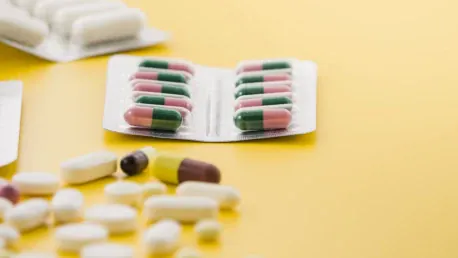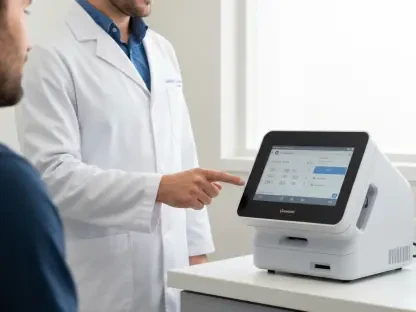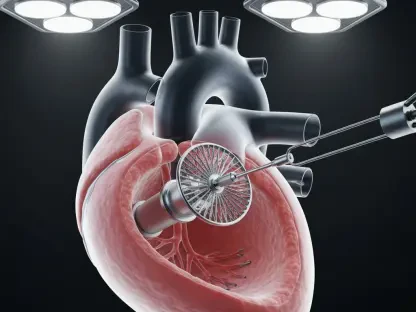Annual drug shortages are common in the US and indeed throughout the world and can be attributed to a few key issues. Experts have pointed out how policy can assist in regulating the production, manufacturing, distribution, and purchase of essential drugs to prevent shortages of critical drugs, which may threaten public health.
Shortages of amoxicillin, some medications used to treat cancer and ADHD, have made headlines around the world. Also of international concern was the shortage of emergency medications like epinephrine and atropine. Here’s how drug shortages occur and what the experts suggest as a buffer against this.
Drug shortage and the US supply chain
The drug shortage in the US has cast a spotlight on the country’s supply chain and its reliability. These shortages have a ripple effect on the health system, undermining patient care and endangering health. When drug shortages occur, patients are forced to delay treatment, ration their medicine and dosages, or use substitutes that, in most cases, are less effective. These shortages not only cause tangible, physical harm, but the mental toll it takes on patients who risk flare-ups due to stress, anxiety, and inadequate doses is as yet unexplored.
Prompted by the severity of the crisis, the Biden administration and Congress have prioritized solutions to this crisis. There are a number of key policy suggestions that have come to the fore, with the main ideas being:
- Stockpiling
- Onshoring
- Advanced manufacturing
- Amending Medicare reimbursement policy and more.
In this next section, we’re going to look at the different root causes of drug shortages, to better evaluate the viability of these interventions.
A general framework for how drug shortages arise
As most people would imagine, a sudden surge, or demand shock, for a particular product leads to shortages as the supply chain cannot quickly adjust. The same is true for drug shortages. Any changes to production or distribution can trigger a drug’s shortage, the most common explored below:
- Disease prevalence
COVID-19 was perhaps the best example of how a rapid increase in disease prevalence could jumpstart a drug shortage. During the height of the pandemic, a broad-spectrum antibiotic was in short supply due to the global demand for respiratory medicines. Demand shocks can also be triggered by how a particular drug is used; a classic example of this is GLP-1 inhibitors, popularly known by brand names like Ozempic or Wegovy, used for weight loss rather than their traditional use in treating diabetic patients.
One drug shortage might trigger another, as patients seek viable alternatives. Other reasons for demand shocks include geopolitical conflicts that impact global supply chain
Disruptions to the supply chain can also occur for many other reasons, from manufacturing quality problems, natural disasters, and manufacturers discontinuing select products in their portfolio to disruptions in international trade due to geopolitical conflicts. These disruptions can occur at any stage of the production process, from raw materials to the production of active pharmaceutical ingredients (API), inactive but critical ingredients, the finished dosage form of a drug, and delivery mechanisms such as syringes.
But not every one of these shocks triggers a shortage. The extent to which a meaningful shortage results depends on the size of the resulting shock and the buffers that may exist.
Shocks often vary in size for reasons that cannot be controlled (e.g., the size of a hurricane), but shock magnitude can also be determined by how the market is structured or operates.
For example, a single facility may represent a large share of product sales, or manufacturing facilities may concentrate in one geographic area, making them vulnerable to a single shock, like a natural disaster or geopolitical instability. Structural dynamics can also affect the shock size through panic buying – uncertainty, low prices, ease of returns, and lack of allocation mechanisms can lead buyers to stockpile a drug at risk of shortage, with that precipitating or deepening the shortage.
A shortage ultimately results if a shock cannot be properly buffered. Buffering strategies can include dual sourcing, excess capacity, and reliance on manufacturing lines fungible enough to accommodate different types of products. Buffering strategies also include various inventory management practices: stockpiles set aside for times of emergency or buffer inventories where inventory levels in the supply chain are high enough so they can absorb greater shocks.
Allocation mechanisms and coordination systems can also minimize the harm that results from shortages.
Stockpiling and buffer inventory
Holding higher levels of inventory can buffer against the adverse impact of a shock, no matter the shock’s etiology. This common application makes stockpiling and buffer inventories a potentially attractive policy solution.
Stockpiles and buffer inventory can be important because not every shock can be prevented. But one cannot buffer every drug product, and with most shortages lasting over a year, it would be prohibitively expensive to buffer a shortage with reserve stock that will last until the supply shortage is resolved.
For this reason, it is important to prioritize which products are stockpiled, considering not only whether these products are medically necessary but also whether their supply chains are vulnerable. For other products, such as highly used large-volume products like saline, stockpiling the FDF product may not be practical, requiring an alternative set of buffering strategies.
Stockpiling or buffer inventory proposals are also incomplete if they do not address panic buying that ensues at the first sign of a potential shortage. If the government creates a buffer inventory and then releases it, a “bank run” on the product is likely to result. Currently, such “bank runs” are uneven, usually with the large hospital systems able to get to the product first. For this reason, any government-funded stockpile should have allocation mechanisms in place, even if they are simply historical allocations. Otherwise, providers most likely to currently suffer from shortages will continue to face hardship.
Lastly, it is important to acknowledge that stockpiles or buffer inventories are a form of insurance in case shocks cannot be prevented or minimized. It may be near impossible to prevent a natural disaster, but on the other hand, quality lapses, which are the primary reason behind shortages, are not only possible but important to address. Without addressing the root cause of manufacturing quality problems, products not made to specification may and can reach patients during non-shortage times, potentially causing harm.
Domestic manufacturing
Domestic manufacturing is offered as a solution to drug shortages perhaps more often than any other policy proposal. This approach appears steeped in concerns over the loss of a U.S. manufacturing base, coupled with worries over supply chain exposure to geopolitical risks that were starkly underscored during the pandemic.
But for all the attention it attracts, the standard “we need to bring manufacturing back to the U.S.” proposal is challenged on three of the four parts of the test: addressing the right problem, completeness of the solution, and assuring cost-effectiveness.
On the right-problem front, domestic manufacturing can be a solution for addressing geopolitical risks. But proposals tend to focus on either the finished dosage form through “buy-American” policies or onshoring of API production. It is true that much FDF and API manufacturing has moved offshore, but do subsidies in U.S. drug production improve supply chain reliability when those companies still rely on inputs from China? Without addressing that reliance, such proposals are incomplete, presenting poor returns on investment for taxpayers.
Domestic manufacturing also does not address the drivers of persistent shortages of generic sterile injectable drugs. These shortages are not a result of geopolitics or domestic versus foreign quality differences. Rather, these shortages result because hospitals, the buyers of these drugs, do not reward manufacturing quality and reliability, leading to manufacturing quality shortfalls in domestic and foreign facilities alike.
The pricing market pressures driving existing shortages also highlight the need to attach strings on quality to domestic manufacturing investments, or else such investments will falter. Any government subsidies to bolster domestic manufacturing in response to geopolitical risks should consider other types of shocks, such as natural disasters. For example, we might have a lot of idle capacity in Puerto Rico, but that is also an area vulnerable to hurricanes.
Domestic manufacturing as a solution is also challenged on the cost-effectiveness front. As described in the section on potential shortages, the pharmaceutical industry and chemical industries that feed the key starting materials for drugs may have extensive exposure to countries with high geopolitical risk. To lower this risk, proper risk mitigation would make diversification through friend-shoring and near-shoring an integral part of U.S. government strategy.
Advanced manufacturing
Because outdated production technologies contribute to the high rate of manufacturing quality problems, the use of advanced manufacturing technologies – continuous manufacturing in particular – is often proposed as a solution that could lower the likelihood of manufacturing disruptions.
These proposals fail to recognize just how strongly economic forces driving shortages of generic sterile injectable drugs work against the adoption of such tools. The low margins on drugs at the greatest risk of shortage mean that the federal government would have to heavily, if not fully, subsidize these technologies. Even with full subsidies of installation costs, these technologies may not translate well into reliability in an environment where the unstable nature of demand can lead to 20-30 products running on a single line. This runs over the course of a year and leads to frequent switchovers that are at the heart of many of the existing disruptions.
To the extent the federal government were to subsidize technology improvements, it should consider whether other, potentially much simpler technology solutions may be more cost-effective. There may be appropriate cases for using advanced manufacturing, but tying a significant share of subsidies to advanced technologies would limit the reach of widely needed infrastructure investments.
Hospital payments for buying reliably
Changing hospital payments to encourage hospital pharmacy procurement from more reliable manufacturers directly addresses the root cause of persistent shortages of generic sterile injectable drugs. By modifying how CMS pays for such generic sterile injectable drugs, CMS can steer hospitals away from their heavy emphasis on price and toward supply reliability.
But even though this policy area addresses the root cause of the problem, how it is designed will influence its cost-effectiveness. To the extent that CMS were to adopt add-on payments, the effectiveness of such an add-on payment in preventing shortages would depend on CMS’ (or FDA’s) ability to identify which manufacturers are reliable. The better the predictive power of such measures, the greater the impact of an add-on payment program tied to such a list of reliable manufacturers.
If those measures are not reliable, CMS would increase government spending without making a difference on the shortage front. This, in turn, would translate into poor taxpayer return on investment. Changing hospitals’ reimbursement for generic sterile injectable markets would also likely falter without changes to Medicaid inflation rebates for outpatient generic drug markets with a large 340B presence (e.g., generic cancer drugs recently in shortage).
Medicaid inflation rebates neutralize price increases in the Medicaid and 340B market segment. But without the ability to pass on cost increases, however reasonable, manufacturers will have little incentive to make the investments necessary to differentiate themselves on manufacturing reliability, which is the entire premise behind payment reforms to address shortages.
Conclusion
Our drug supply chains are not as reliable as we expect them to be, resulting in disruptions in medical care and causing patient harm. But little progress will take place unless there is a systemic change in the economic dynamics and the misaligned incentives that exist in the marketplace. Because economic dynamics are at play, the U.S. government plays an important role in driving change.
But, building reliability into the supply chain does not come for free. Between the enormity of the drug supply chains and the limited resources that Congress is likely to appropriate toward solving drug shortage problems, government intervention can easily become a feel-good strategy that does little to improve supply chain reliability where it matters most. Policymakers can avoid such a fate by properly mapping solutions to the underlying problem, avoiding incomplete solutions, considering return on investment, and addressing unintended consequences. This article presents a guide to the nature of shortages and ways to accomplish the best outcome with limited resources.









